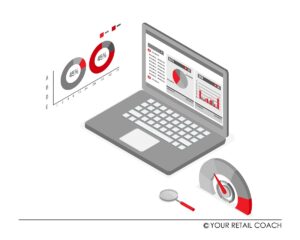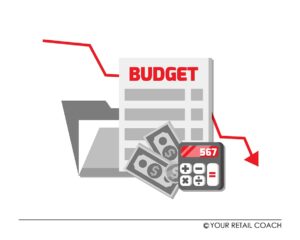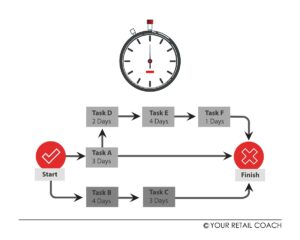NetSuite Retail – Planning & Implementation Solutions
What is NetSuite Retail?
NetSuite Retail is a cloud-based retail management suite. Oracle acquired NetSuite (the company) and now the latter operates as a Global Business Unit within Oracle. The platform has an estimated user base of more than 29,000 organisations across the world.
NetSuite provides a unified platform to manage the business processes of a retail enterprise. A few important functions and processes covered in this suite under various products include:
- ERP (Financial, Order, Inventory, Warehouse, Supply Chain)
- Accounting
- CRM
- Human Capital Management
- Omnichannel Commerce
- Analytics & Reporting
- Professional Services Automation (Project management, timesheet management, etc.)
One of the featured USPs of this NetSuite platform is that it is specifically built for retail and omnichannel customer experience. At the level of functionality, as a software service, it enables retail businesses from anywhere in the world to use the application and manage inventory, order fulfilment, and other business processes over the cloud. Its omnichannel capabilities make it an ideal business management software platform for contemporary retail and eCommerce enterprises.
Challenges in Implementing NetSuite Retail
Lack of Project Management Approach

Implementing an ERP solution like NetSuite Retail requires meticulous planning and sound management. There are multiple stages to be followed from discovery, planning and design to development, deployment, and testing. Each stage has its own requirements and complexities that can be challenging to be completed without professional expertise. The entire ERP implementation exercise is a full-scale project involving a dedicated team of experts. Without sound project management, it could get very difficult to achieve the desired final output i.e. a software platform that could meet the business requirements. If an implementation partner is engaged from the outside, they must be specialised professionals in handling such projects.
Sloppy Budgeting

In ERP implementation projects, it is important to have planned and realistic budgetary planning and provisions. It assists businesses in keeping their project expenses within the defined limits and avoiding financial hiccups. Rushing into ERP implementation without planned and realistic financial planning may slow down or delay the exercise.
Another strong reason to have realistic budgets is budget overruns. Complexities and late-realised improvisations do arise in ERP implementation projects. This expands the scope of implementation and resultantly, the project timelines. Additional resources may have to be invested. When the scope of the emergence of such contingencies is predictable, then these should also be accounted for in the project budgetary planning in the very beginning.
Lengthy Implementation Timeline

The industry standard timeline for an ERP implementation is 3 months to 1.5 years. This timeline varies depending upon the requirements of the products to be implemented. Without professional expertise and guidance, the NetSuite implementation timelines can stretch. And it happens most of the time. It enhances the cost of NetSuite implementation. Businesses need to carry realistic expectations here. Without strong project management, competent teams, and selection of the right implementation methodology, businesses end up stretching their project timelines with hasty implementation.
Selection of Faulty Implementation Methodology
The selection of the NetSuite ERP implementation methodology depends on a wide number of factors like the size and spread of the enterprise, the number of departments to be brought under the ambit of the ERP, specific requirements and customisations sought, and the mode of implementation. While the other factors vary from business to business, there are two main types of implementation modes: on-premise implementation and cloud-based implementation. In NetSuite implementation services, experts believe that adopting the right implementation strategy followed up by supportive implementation planning is the key.
Less Emphasis on User Training
Many retail businesses after implementing an ERP solution in their organisations ignore or put insufficient emphasis on the need to train their employees on the software platform. This happens when user training is not a part of the implementation planning. Businesses after spending months on the implementation process begin to lose the steam and want the rest of the things to happen as early as possible. They could see that their operations have already been hampered during the implementation process. There are tendencies of over-reliance on the independent technical capabilities of the employees. Or merely training the team leaders and managers is not enough in the case of ERPs. The worst is to consider user training as an avoidable expense. A new software brings with it a myriad of changes that are alien to employees – a whole new interface, changed workflow, new buttons, tabs and links, new formats, new terminologies, etc. Making the process owners comfortable and convergent with the new software and its functioning is critical. This helps in quicker adaptation with a faster learning curve. Experts from any NetSuite implementation company could tell that a software cannot be blamed for not delivering the promised performance without providing the necessary user training.
How YRC can help
We offer implementation and support services to retail and eCommerce enterprises in implementing NetSuite Retail ERP solutions in their businesses. The service design and delivery are executed by a team of expert and experienced NetSuite retail consultants and professionals following planned and customised process solutions. We operate with zero tolerance for deviations while ensuring that the entire implementation takes place in a planned and systematic manner. Highlighted below are some of the important service areas we cover.
Need Validation and Feasibility Analysis
In this preliminary stage, we seek to establish clients’ business case of having a NetSuite Retail solution in their business. In need validation, some important questions we ask and seek to answer are:
– What business goals and associated functional objectives are aimed to be achieved?
– Does it affect the existing business model?
– Which retail functions will be carried out through the ERP solution?
– Which product should be selected?
– Is budgeting for the project possible?
– Will the chosen solution achieve the desired outcomes?
– What kind of user training will be required?
The answer to these questions contributes to giving a shape and direction to the entire implementation strategy and planning.
Mapping the Business Software Requirements and Assistance in Software Customisation
For an ERP to deliver the intended outcomes, it is important to first choose the right product(s) and then customise it to meet the business requirements. And to achieve both these objectives, businesses must have an understanding of their requirements. For example, a retail enterprise looking for a holistic solution will go for an ERP package. But if the requirement is specific, say customer management, it will choose a CRM product. Even within each solution, it has to be assessed whether the selected product has the capabilities to meet the detailed and additional requirements. For instance, some businesses may want the CRM product to have the features of marketing automation or sales forecasting. Our role here is to map the business requirements of the clients to determine the best-fit solution and prepare the blueprint for product customisation. After finalising the product and the vendor/channel partner, we coordinate with the latter to customise the software platform to align it with clients’ mapped business requirements.
Development of Vendor Selection and Purchase Processes
Even with the presence of channel partners or vendors, businesses should still follow due diligence and screening exercises in the vendor/partner selection process. Some of the important criteria that should form part of this process are implementation capacity, experience in handling similar projects, service orientation, after-sales services, etc. Our expert team shall design the vendor selection and purchase processes to find the most suitable vendors and ensure that the purchase process is executed in a premeditated and systematic manner covering adherence to clients’ business policies, documentation, comparative price analysis, securing post-sales services, etc. Our assessments and recommendations prioritise clients’ business requirements while maintaining an unbiased approach and transparent principles and practices.
ERP Implementation
After vendor selection, purchase, and software customisation are completed, we move to the actual implementation stage. In this stage, we formulate the implementation strategies and chalk out the implementation plans. SOP-driven processes are developed for securing flawless and timely implementation of the software platform and taking it live. This entire NetSuite implementation process is carried out by a dedicated team of expert and experienced professionals. We will also map the scope of the vendor’s roles and responsibilities in the entire implementation exercise. Minimising the possibilities of unavoidable disturbances to routine business operations without hampering the project timelines remains our prerogative. Deviations and inconsistencies detected at any stage during the testing and implementation period are duly reported to the partner/vendor team. Our robust feedback mechanism helps us keep our clients informed of the progress and developments made throughout the implementation exercise.
User SOP Training and User Blueprint Manuals
The need for training in this particular context has two unavoidable aspects. One – here we are talking about a sophisticated software platform. Two – providing training is a fundamental management practice. Therefore, the need for providing user training and user blueprint manuals for NetSuite Retail could not be undermined. These advanced software programs cannot be picked up intuitively by users. The adaptability of users in using such software platforms cannot be left to unrealistic assumptions.
Our role is to make the users friendly with the ERP platform and make them competent to operate the software in the shortest possible period. We design and impart the user training modules for NetSuite Retail solutions supported by the user blueprint manuals describing and depicting the actual workflow of the software platform. Our goal is to provide the users, not just with the operation skills but also the functional understanding of the relevant software features. We take into consideration the fact that different users use the same platform from different functional perspectives. Clients can share their feedback and requirements in the design and development of the training programs and user manuals.
YRC is a retail and eCommerce business consultancy brand with over ten years of experience. We have consulted 500+ clients in 20+ verticals. Today, we are a global brand with a service presence in more than ten countries. The development of SOP-driven process solutions for retail ERP implementation is one of our flagship services.


We work only for Visionaries.